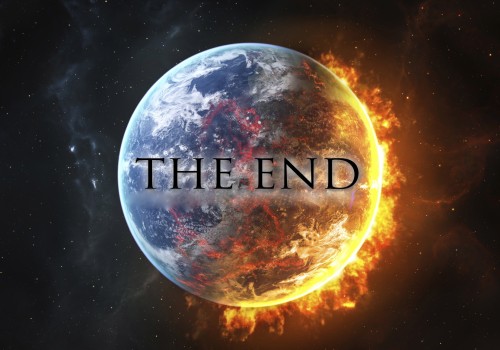But we know that it is coming. According to astronomers, the Sun's luminosity increases by about 6 percent every billion years. While 6 percent might not seem like much, it's enough to render our planet inhospitable to life as we know it in 1.1 billion years.
The end of everything else, though, is a little bit more difficult to predict, but that hasn't stopped scientists from speculating and theorizing.
The Big Rip
Our universe is expanding. It happens because of a mysterious form of energy know as "dark energy". We don't know what it is but, each year, this dark energy causes the rate of expansion to increase.
One theory of our ultimate end relies on the assumption that this expansion will continue indefinitely - until the galaxies, stars, planets, and matter (even the subatomic building blocks that comprise all matter) can no longer hold themselves together. At which point, they rip apart.
This theory is called the Big Rip.
Whether or not this actually happens depends on critical density (the boundary value between open models that expand forever and closed models that re-collapse).
According to Robert Caldwell, a theoretical physicist from Dartmouth College, if the Big Rip won out over all of the apocalyptic scenarios put forth in this piece, the event would occur in some 22 billion years, when the Sun has already transitioned from a main-sequence star to a red-giant (incinerating Earth as a result) and then into a white dwarf.
If Earth did manage to survive intact, the planet would explode about 30 minutes before the grand finale.
The Big Freeze
Another popular scenario for the end of the universe that relies on deciphering the true nature of dark energy is the Big Freeze (also referred to as Heat Death or the Big Chill).
In this scenario, the universe continues to expand at an ever-increasing speed. As this happens, the heat is dispersed throughout space while galaxies, stars, and planets are all pulled farther and farther from one another. In the very distant future, intelligent civilizations will look into the sky and think they are alone. Everything will be so far away that the light from distant stars and galaxies can never reach them.
Eventually, planets, stars, and galaxies would be pulled so far apart that the stars would eventually lose access to raw material needed for star formation And thus, the lights would inevitably go out for good.
It will continue to get colder and colder until the temperature throughout the universe reaches absolute zero. At absolute zero, all movement stops. Nothing can exist in such a place, as there is literally no energy. At all. Anywhere.
This is the point at which the universe would reach a maximum state of entropy. Instead of fiery cradles, galaxies would become coffins filled with the remnants of dead stars.
Many scientists (astronomers and physicists alike) believe this is one of the most probable scenarios.
The Big Crunch
The Big Crunch is thought to be the direct consequence of the Big Bang. In this model, the expansion of the universe doesn't continue forever.
After an undetermined amount of time (possibly trillions of years), if the average density of the universe was enough to stop the expansion, the universe would begin the process of collapsing in on itself. Eventually, all of the matter and particles in existence would be pulled together into a super dense state (perhaps even into a black hole-like singularity).
Such an event might have already happened before. Some scientists have theorized that the universe we see is the result of a cyclic repetition of the Big Bang, where the first cosmological event came about after the collapse of a previous universe. This is something called conformal cyclic cosmology.
Unlike the first two scenarios, this model relies on the geometry of the universe being "closed" (like the surface of a sphere). An event like this would be like a single breath: the universe would "breathe out" the Big Bang, and "breathe in" the Big Crunch.
This could also happen if we see a reversal of dark energy's current expansion effect.
Similar to this theory (and the Big Bang) is the Big Bounce. A sort of symmetry is proposed here- the universe is in a continuous cycle of expanding out aand then collapsing onto itself. Effectively, we could be one of many iterations of the universe. Perhaps even more eerie to think about is the idea that maybe each time the universe resets, it plays out the same way. Perhaps the you that is currently reading this article right now is just one you out of 10 googleplex versions that existed before.
Ultimately, the universe may be like the mythical phoenix - its death is actually a fiery rebirth.
The Big Slurp
This theory surfaced just a few years ago, after revelations were released about the true nature of the Higgs Boson, which is the particle that plays a role in granting mass to elementary particles.
In this model, if the Higgs Boson particle weighs in at a certain mass, it could indicate that the vacuum of our universe may be inherently unstable, perhaps existing in a perpetual metastable state - something that has been discussed at length many times before.
If this were the case, our universe might experience a catastrophic event when a "bubble" from another alternate universe appears in ours. If this bubble exists in a lower-energy state than our bubble. the universe could be completely annihilated.
In essence, it would cause all the protons in all matter in our universe to decay. By proxy, so would we. If that doesn't sound unpleasant enough, this sort of a vacuum metastability event could happen at virtually any moment, anywhere in our universe. The bubble could pop over and start expanding at light-speed until it swallowed us entirely.

There are hundreds of known cosmic events that could obliterate the life on our planet. High energy solar flares, cataclysmic impact events, gamma ray bursts, a nearby supernova, and on and on. However, the chances of Earth suffering a life-ending global catastrophe are actually rather slim.




